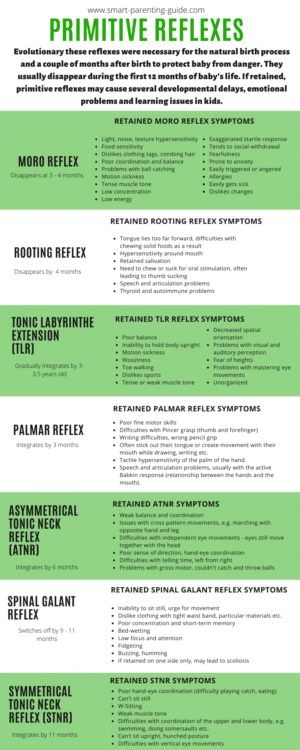
"My girl… I wasn't prepared to be her mom… I can't handle her. She is the strongest willed toddler ever. It feels like she controls our lives. She decides what day it will be -peaceful or stressful with lots of whining, screaming, crying. She behaves terribly almost every single day. Makes car rides miserable. She climbs, throws, hits, screams, whines all day long, almost nonstop. On other days she is the sweetest child in the world with lots of kissing and hugging. But we have bad days much more often than the peaceful ones. I want to enjoy the time spent with my daughter while she's tiny. But I'm losing. I feel sick, weak, and so much tired of her spirit. What shall I do?"
Have you ever felt desperate with your spirited toddler?
There might be numerous reasons for your toddler to get cranky and spirited. For example, issues with the sensory input processing make children hypersensitive and irritated by the surrounding noises, lights, tactile perception. If this is the case, a course of occupational therapy will help your child and bring comfort to your everyday life. Also consider your toddler's diet, health issues, your child's health upon delivery, temperament, the emotional climate at home and recent events. Very often, there is a combination of factors leading to cranky and disruptive behavior.
When consider the reasons for your toddler's troublesome conduct, the first thing to exclude are the physiological issues. If your child still has active primitive reflexes after the age of 12 months, do not expect a lot of self-control and emotional maturity from your toddler. Retained primitive reflexes delay the development of psychomotor skills of a child and have a significant impact on his emotional state. Active primitive reflexes are not the thing tested in the first place, but it might take a great deal in your everyday struggle.
Moreover, testing for the primitive reflex integration is quite easy and can be done, at least preliminary, by the parent at home. Testing at home is a good starting point, especially if you are tight on a budget. Even though you must always seek professional help if you have any concerns about your child's health, it can save you a lot of time and money, if you point out your doctor's attention to the problem of non-integrated reflexes in you child in case you find them.
Primitive reflexes hide behind your toddler's cranky behavior
Primitive reflexes are essential at birth and through the infancy, but when the child turns one year old, most of these reflexes should have been fully integrated already for the child's healthy development. These reflexes provide the base for the development of more complex motor functions and disappear when those skills are properly developed.
In some cases, primitive reflexes retain in toddlers and preschoolers pursuing a detrimental impact on the development of more advanced psychomotor skills of a child (https://www.ncbi.nlm.nih.gov/pubmed/29379547). For example, the retained Moro reflex makes toddlers hypersensitive to external stimuli. Sudden loss of balance, bright light, loud sound activate the flight or fight mode in a child that results in anxiety, stress, emotional sensitivity and reactivity. Unfortunately, many parents don't realize the reasons for their child's challenging behavior and get annoyed and stressed with their "spirited" child. Toddlers with Moro reflex are not able to express their feelings in a more socially acceptable manner. Therefore, when the fight or flight mode turns on, they exhibit impulsive and inappropriate behavior. Interestingly, many children born through the C-section exhibit stronger Moro reflex than those born vaginally. Strong Moro reflex was also found in premature and low birth weight children (https://www.ncbi.nlm.nih.gov/pubmed/9154417)
Very simple evaluation and integration of the primitive reflexes might solve a lot of the everyday issues and temper tantrums you get from your little kid. Moreover, if not integrated, primitive reflexes may cause learning issues and disabilities in school. Do not expect your child to grow out of the retained reflex and do not think that your child's symptoms cannot improve.
In 2018, researchers found that 65 % of the tested preschool children had at least one active primitive reflex between ages 4 and 6 (https://www.ncbi.nlm.nih.gov/pmc/articles/PMC5778413/). The presence of non-integrated reflexes in a kid immediately affects how he sits, maintains focus, receives and comprehends information. With non-integrated reflexes any training is a burden!
How can I help my child integrate those primitive reflexes?
Simple exercises introduced daily for a minimum of 30 days to integrate those retained reflexes might dramatically improve psychomotor development of a small child and related behavior issues. These exercises usually take less than five minutes a day, but they improve a child's emotional and developmental state substantially by switching off his survival mode.
Videos below are made by professional OTs and pediatricians to teach you how to test your child's reflexes at home. If you find that some of the reflexes are still active, you could work for 30 days with your child on the reflex integration using these OT's videos. Observe whether there are any improvements in the child's behavior after this. In case you are not sure, it is better to seek professional help for the reflex evaluation by an OT or a physician. Even some physiotherapists have enough training to do that, but make sure that they have some experience with the reflex examination in children over 1 year old.
Moro primitive reflex
Children with retained Moro reflex often show a high level of reactivity in stressful situations; they might seem shy and scared in social situations, feel a strong need to control the situation and dislike changes a lot. Among symptoms of the retained Moro reflex are hypersensitivity and hyperreactivity to particular stimuli, high level of motion sickness, weak balance, problems with catching a ball, problems with visual attention and concentration, fearfulness. Also he might experience strong resistance to sudden loud noises, lights, weak adaptability to new situations and changes. In adults, retained Moro reflex might become a reason of anxiousness and panic attacks. If you find any of these symptoms in your toddler, the earlier you have him tested for the retained Moro reflex, the better impact it will have on his cognitive development and emotional status.
More information on the retained Moro reflex watch here.
This video shows how to test a child for the retained Moro reflex
Here is a simple exercise to integrate the Moro reflex. Repeat it with your child every day for 30 days for stable integration result.
Tonic labyrinthine reflex (TLR)
Retained TLR influences a child's motor skills like balance, muscle tone, body stability in the upright position. Symptoms include weak balance, problems with holding the body upright, toe walking, dizziness, motion sickness, weak spatial orientation, problems with auditory and visual attention.
More information on retained TLR watch here.
Test for the retained TLR.
Exercises to integrate TLR: The Superman
Asymmetric tonic neck reflex (ATNR)
ATNR is important during labor and further baby development in first few months of life when it helps to improve hand-eye coordination. This reflex also helps to grow baby’s first attempts to reach the object and improve the overall body movements on each side of the body. If ATNR remains active in older children, it influences the cross-pattern movements development, bilateral integration and eye movements. Among symptoms of retained ATNR are weak balance and coordination, issues with cross pattern movements, e.g. marching with opposite hand and leg, difficulties with independent eye movements - eyes still move together with the head, poor sense of direction, hand-eye coordination, difficulties with telling time, left from right, problems with gross motor - couldn't catch and throw balls. More on the ATNR you may find in the videos below.
What is ATNR? Watch here.
Test for the retained ATNR
Integrate ATNR: The Robot
Symmetrical Tonic Neck Reflex (STNR)
Usually, this reflex appears before the child is ready to crawl and helps her to get up form the floor, train muscles of the lower and upper body parts, focus his vision from the short to long distance and vice versa. When the baby starts crawling, her lower and upper body has enough coordination and STNR disappears. If the reflex retains, the child might be clumsy due to the poor coordination of upper and lower body, has poor hand-eye coordination (difficulty playing catch, eating), can't sit still, preffers W-sitting, has weak muscle tone, can’t sit upright, and demonstrates difficulties with vertical eye movements. Learn more about STNR and how to t=integrate it in the videos below.
What is STNR? Watch here.
Test for the retained STNR
Integrate STNR: The Stretching Cat
Palmar Grasp Reflex
Palmar reflex is a legacy from our ancestors when it helped newborns to hold tight their mothers during movements from tree to tree. Also, it plays a role in breastfeeding, when baby holds mom’s breast while sucking. This connection between hands and lips is also called Babkin reflex. If Palmar reflex retains longer, it leads to poor fine motor skills, difficulties with Pincer grasp (thumb and forefinger), writing difficulties, wrong pencil grip. Children with Palmar reflex often stick out their tongue or create movement with their mouth while drawing, writing etc. Also, they have tactile hypersensitivity of the palm and speech and articulation problems, usually with the active Babkin response (the relationship between the hands and the mouth). Watch how to test and integrate the Palmar reflex in the following videos.
What is Palmar reflex? Watch here.
Test for the retained Palmar reflex
Integrate Palmar reflex: Thumbs In and Thumbs Out, Birds and Ducks, Finger Touches.
Spinal Gallant Reflex
Spinal Gallant reflex is important during delivery and gradually disappears during the first 9 months of life. If retained, the reflex leads to a series of negative consequences. For example, the inability to sit still, urge for movement, the child dislikes clothing with tight waistband, particular materials etc. Also, he has poor concentration and short-term memory, frequent bed-wetting after the age of 5, low focus and attention, fidgeting, buzzing, humming. If retained on one side only, spinal Gallant reflex leads to scoliosis.
More on Spinal Gallant Reflex watch here.
Test for the retained Gallant reflex
Integrate Gallant reflex: The Snow Angel
On the info graphic below, you will find summarized primitive reflexes and ages when babies should have them integrated as well as the symptoms of the retained reflex. Using this useful table, you can quickly scan the symptoms and find if any of them relate to your child. If you find any symptoms from the info graphic relevant for your child, please, contact your doctor to get the professional advice. Optionally, you may choose to follow the videos above, to find out about the particular retained reflex, how to test it at home and integrate the reflex with simple exercises in 30 days.

If you want to dive deeper into the primitive reflexes and understand why kids behave the way do, I would highly recommend a book by Sally Goddard Blythe “The Well Balanced Child” .
After reading this book, you’ll understand the connection between the proper early motor development and learning process and why the early development period of life is so important. The book is full of recommendations and exercises to do with your child at home. By simply introducing these exercises, parents might help their baby to reach full potential.
The current situation with the COVID-19 and social distancing is an excellent opportunity to focus on your child‘s physical and mental development without the need to leave your home. You can turn the reflex testing at home into a game in which all family members participate. Don’t be surprised if you find an active primitive reflex in yourself or your husband. Just to let you know, many adults have active some of the primitive reflexes as well. You might work on the integration of your primitive reflexes together with your children and improve your own emotional and cognitive skills, which is especially important in the current challenging period of life.


